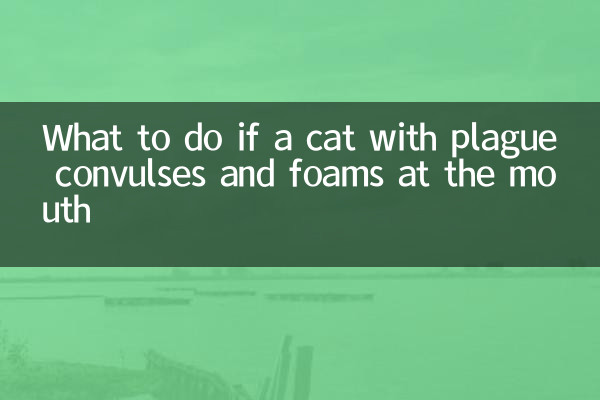What to do if a cat with plague convulses and foams at the mouth
Recently, feline panleukopenia (feline panleukopenia) has become a hot topic in the pet circle. Many cat owners are anxious to seek help because their cats have symptoms such as convulsions and foaming. This article combines the hot content on the Internet in the past 10 days to sort out the response methods, symptom analysis and preventive measures for cat plague to help you scientifically respond to emergencies.
Feline distemper is caused by feline parvovirus (FPV) and is highly contagious and fatal. The following are common symptoms:

| symptom | Performance | Hazard level |
|---|---|---|
| Vomit | Yellow-green liquid or foam | ★★★ |
| diarrhea | Bloody or watery stool | ★★★★ |
| twitch | Generalized or localized muscle spasms | ★★★★★ |
| high fever | Body temperature exceeds 40℃ | ★★★ |
Notice:If your cat has convulsions or foams at the mouth, it may have entered a critical stage and requires immediate medical attention!
1.Isolation and disinfection:Isolate the sick cat from other pets and use sodium hypochlorite (1:32 dilution) to disinfect the environment.
2.Warmth and hydration:Wrap the cat in a blanket to prevent hypothermia, and feed glucose water in small amounts and multiple times (without vomiting).
3.Fasting and no drinking:Avoid feeding during convulsions to prevent coughing and suffocation.
4.Medical treatment priority:Cat plague requires professional treatment. The following are emergency medical signals:
| Condition | Handling suggestions |
|---|---|
| Continuous twitching for more than 5 minutes | Take the cat to the hospital immediately and keep the cat lying on its side during the journey |
| Vomit with blood | Requires intravenous fluids and hemostatic drugs |
| Not eating for 24 hours | May require gastric tube insertion or nutritional support |
According to recent public data from pet hospitals, the core treatment options for cat plague include:
| Treatment direction | Commonly used drugs/methods | Effectiveness (clinical statistics) |
|---|---|---|
| Antiviral | Feline distemper monoclonal antibody, interferon | 68%-75% |
| Stop vomiting and hemorrhage | Omeprazole, vitamin K1 | 82%-90% |
| Control tics | Diazepam (need to strictly follow doctor’s advice) | For emergencies only |
IMPORTANT NOTE:Never self-medicate! In particular, human anti-epileptic drugs can be toxic to cats.
1.Vaccination:Kittens need to be vaccinated with Miao Sanduo vaccine (first dose at 8 weeks of age, booster every 3-4 weeks).
2.Recovery care:Surviving cats need to continue to supplement lactoferrin and probiotics, and avoid bathing for 2 months.
3.Environmental management:The virus can survive in the environment for more than 1 year and needs to be thoroughly treated with ultraviolet light + disinfectant.
Recent trending cases show that the survival rate with early treatment can reach over 60%, while with delayed treatment it drops to less than 20%. If your cat shows suspicious symptoms, be sure to seek medical attention as soon as possible!
References:2023 "White Paper on Diagnosis and Treatment of Pet Diseases in China" and the latest guidelines from the American Association of Feline Practitioners (AAFP).

check the details

check the details